Grandma Hudson and I waded in the water by the side of the road down in Porter Gulch. The sun beat down on our straw hats as we foraged for the water cress that grew wild in the ditch. I was more interested in the tadpoles skittering around the weeds and rocks, than in a bunch of salad greens. The cicadas droned so loud my eight-year-old ears were ringing like hammers on anvils. We’d already picked a basket full of wild mustard over in “the flat” for our supper. Its bitter green leaves were revolting to us kids, (“icky”, I think, was what we said) but it was free for the picking, so too bad! Eat it or go to bed hungry. She often made do with what “the Lord provided”.
Grandma Hudson was tall and wiry, with a very erect posture. She had flat, angular cheek bones and an aquiline nose, the look of a Native American. She was a fiercely independent, strong woman and not to be messed with. I was always fascinated by the prominent veins that stood out like 3-D roadmaps on the backs of her old hands. Sometimes she would let me run my little fingers over them tracing out a path as she sat listening to the radio, sometimes she slapped them away.
She always wore dresses and slips, Grandma Hudson. I never once saw her in trousers. She covered her faded house-dresses with aprons that she’d made from feed sacks. It was her habit to wear a boned corset and long thick lisle stockings held up by garters — even when she was gardening or killing chickens or cleaning out the drainage ditches with a shovel. She would not have felt properly dressed, I guess, without them, but she was bean-pole thin and the last woman on Earth who needed a corset.
She had one pair of sturdy brown shoes that she wore every day until the soles fell off, and then she’d buy another pair just like them from the Montgomery-Ward catalog. In the last few years of her life she’d switched to high-top Converse tennis shoes, which we thought was so funny, but we knew better than to say anything. She did have one pair of nice black shoes, a wool-flannel skirt, one rose-colored sweater and a white blouse that she called a “shirtwaist”. She kept these aside only to be worn for “going to town” or for visiting.
Born and raised in Iowa, Grandma met Benjamin Hudson at a barn dance. He was a handsome, charming young clog dancer of some renown. They married and had four children, each one born in a different state — Iowa, Oklahoma, Washington and California. Benny just couldn’t seem to settle down. No one ever told me what he did for a living, but he left his wife and children for weeks at a time, traveling around the country, participating in dance shows and competitions. Family gossip abounds about his shameless romancing of various willing women along the way. “He was usually home just long enough to get me pregnant again,” I remember Grandma saying. She raised those children on her own, really, finally settling down in Santa Cruz County in the 1920s.
Grandma Hudson’s adult life was divided into two distinct parts - “before the house burned” and “after the house burned”. In the 1930s, Benny was killed. He stupidly poured kerosene onto a lit fire in the living room wood-burning stove, and the flame flew up the stream of fuel, out of the stove and burned him and the entire house to ashes within minutes. Grandma and Benny Jr. just stood there in shock in the weedy yard contemplating the ruins and wondering what the hell they would do next. Everything was lost.
Grandma still had the one child at home, the other three had married and scattered. Fortunately, she had good neighbors in Porter Gulch to see her through her troubles. They all got together and raised a small, single-wall, board and batten cabin for her — just three small rooms, with a plumbed sink and water heater in the kitchen, but no shower or toilet. Those facilities were in separate out-buildings right up to the 1950s.
When my brother and I were both little, we stayed with Grandma Hudson off and on while Mom was working and Dad was sometimes working, but more likely drinking and halfheartedly seeking employment. There was only one bedroom, so the two of us slept in the living room on a dusty love seat and a narrow cot.
Funny, the things we recall from our childhood. It’s never the big picture, just small images and sounds. Grandma had an old sagging iron bedstead that had maybe six layers of paint chipping off. Her bedroom had no lamps, only a bare light bulb hanging from a cord in the ceiling. Onto the short pull-chain switch, she tied a long piece of twine and ran it over to the bed. She tied the end to the headboard so that she could get into bed at night, reach up to the string and put out the light.
Grandma planted and worked a 500 sq ft garden to feed her family. She planted cranberry beans, potatoes, cabbages, turnips. tomatoes, winter squash. She would plant snap beans and corn together in the same hole with small chunks of fish heads for fertilizer. The beans would grow up the cornstalks, so no poles were needed.
She bought a box of twenty baby chicks every spring, and we had chickens (which she would expertly dispatch with an axe) for our dinners year round. We were poor, but I don’t remember going hungry. She cooked kidney beans with small bits of salt pork. She would always add a little canned milk onto our bowl of beans. I don’t know where she learned that, maybe in Oklahoma, but I remember it was delicious, as were the soups that she made with mixed bones from the market - which the butcher gave away free in those days. She was an expert in making cornbread and dumplings, pies and applesauce cakes.
On hot summer days, the three of us hiked up to the end of the road to go berry picking at the large hilltop farm. There was nearly an acre of Boysen berries, Logan berries and what grandma called Lolly berries. They paid their pickers by the basket. My job was to keep an eye on my 2 year old brother so he wouldn’t wander off while she was working up and down the rows. When he fell asleep on a blanket under a shady bush, I had to pick berries, too. My baskets were slow to fill, though, as it was “one for the basket, one for me, one for the basket, one for me…” I , of course, denied having eaten any berries at all, blatant lies issuing forth from my purple-stained mouth. She’d bring a thermos of water for us and a peanut butter and grape jelly sandwich for our lunch. We sat in the leafy shade of an oak and to this day I can still hear the lazy buzzing of bees, feel the hot sun on my face, smell the dry, heated grass, the sage, the lavender, the tang of skunk somewhere on the hill.
Grandma picked berries and took in mending and ironing to make a living, and she was a well-respected quilter in our area. Women would bring her the quilt tops they’d pieced together and she would finish the work by adding cotton filling and a backing and then quilting by hand around the designs that she would chalk on to the quilt top. She was well known for her very fine stitches and fanciful feather-like designs.
~~~~~
Grandma Hudson always reminded us that she was “half-breed Cherokee” and proud of it. (Her words, not mine.) She had very strong Indian-like facial features, leathery sun-browned skin, a tall dignified bearing. She always smelled of wood-smoke from the cook stove. Her children for some reason would not accept their lineage and always denied their Indian blood. They were ashamed, and begged her never to mention it.
It is curious though, that years after she died, her grandson had his DNA tested for exploring his genealogy and there was not even the tiniest trace of Native American DNA in his genome. Turns out that Grandma’s heritage was primarily English and Scottish. Why she told us she was Cherokee all those years, will always be a family mystery. My only guess is that because of her physiognomy, her parents might have jokingly called her “our little Cherokee” and teased her into believing it was true? We have no other explanation.
~~~~~.
Mary Hudson was my step-grandma, we shared no heritage, and I am ashamed to admit that I didn’t like her very much as a kid. She was always ill-tempered and impatient with us. She tolerated no foolishness and we were constantly threatened with the willow switch that she kept hanging behind the kitchen door ready to whip our bare legs if we didn’t “pipe down” or “be still”. I can’t remember her ever carrying that out that punishment, but we lived in fear of it.
The two of us children, being so young, were the very epicenter of our own turbulent lives. Grandma waited on us, cooked for us, washed our feet before bed and tucked us in. We had no understanding or empathy with the amount of work she did to keep us all afloat or of her past sorrows, worries and hardships. It didn’t even cross our minds. Looking back, of course, I completely understand her and dearly wish I could sit down with her now and hear more of her story.
🌿Leaves is recommending a brand new Substack called .
will post a couple more stories on Sunday. I hope you’ll have a look and make her feel welcome. She and her husband live in Porter Gulch, in Grandma Hudson’s old cabin ( now with indoor plumbing ).
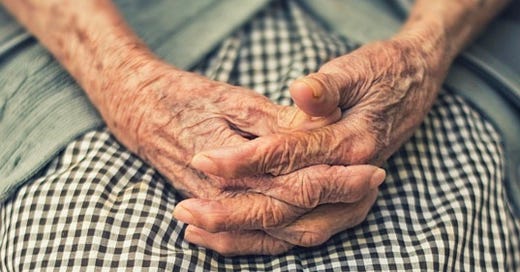



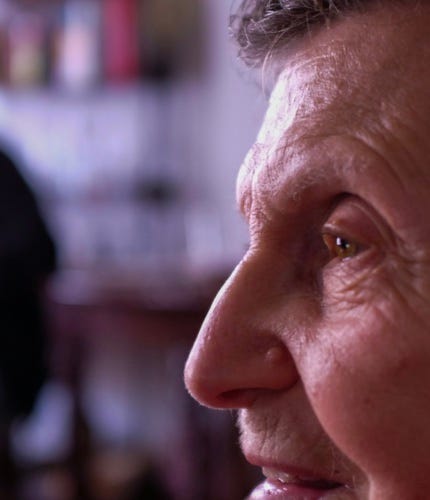
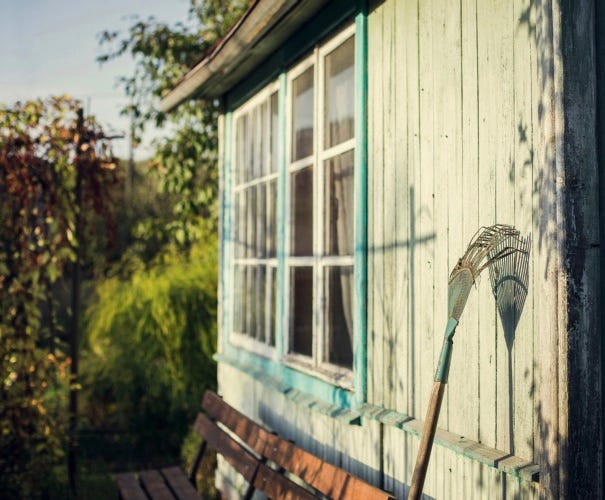
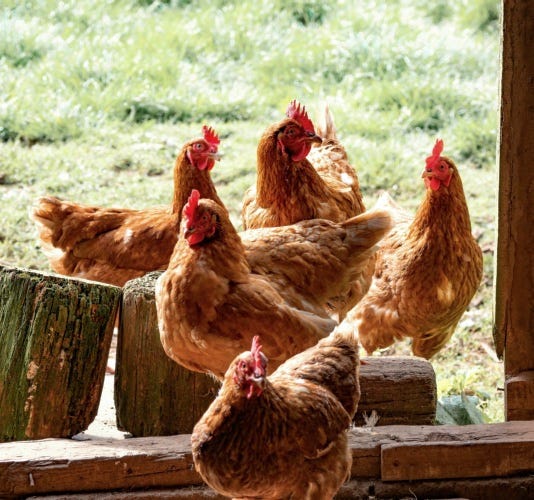
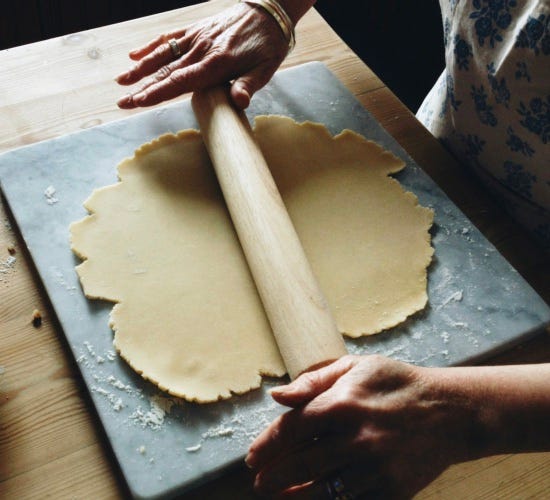
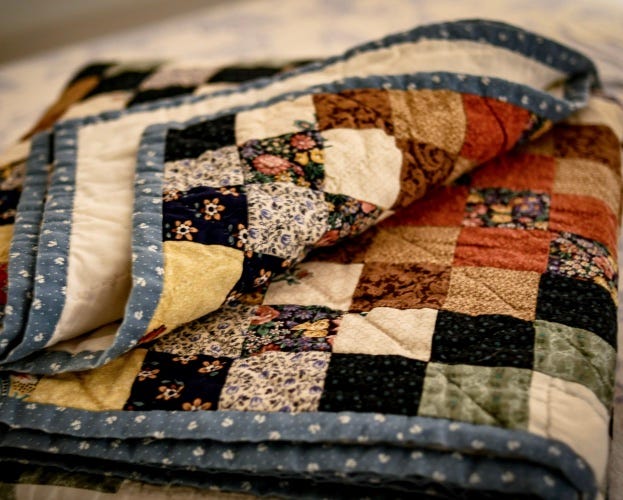

Cranberry beans! My grandma was the only person I knew who grew those.
Also the only person I knew who’d tell us kids to “Pipe down!” or “Be still!”
You put me right back in her kitchen.
Truly a poignant and beautifully written memoir, Sharron. I didn't want it to end. My own grandmother was similar in her stern nature but she lived long enough for me to begin to understand how her generation demonstrated their feelings. She loved geography and would pore over the maps I would bring her from my father's collection of National Geographic magazines. When she became incapacitated, she somehow became a big baseball fan and we had many lively conversations about our beloved Yankees.
I originally thought that Porter Gulch was a fictional place. I was happy to realize that it does exist and that Sharon is keeping the tradition alive. I'm looking forward to reading her posts from the gopher farm.
Thank you for introducing us to Grandma Hudson, Sharron.